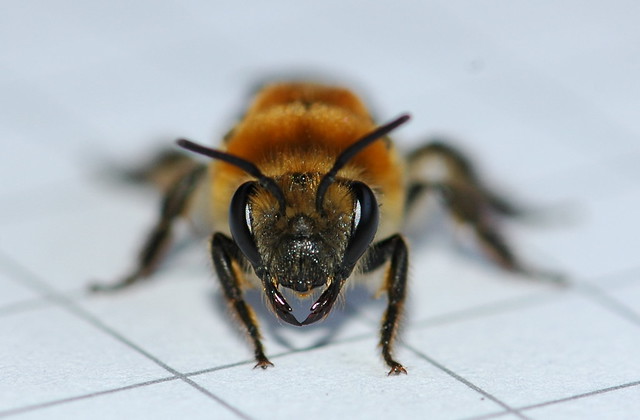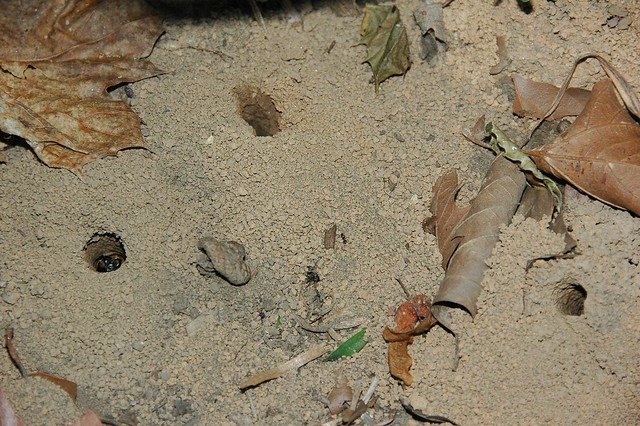
Earlier this evening, I was interviewed on Sex and Politics Radio, a program broadcast on Brooklyn College Radio. If you missed it, the podcast will be published sometime next week.
Related Content
If you want to learn more about some of the issues I talked about on the radio tonight, take a look at some of my past blog posts about bees.Gardening with the Hymenoptera (and yet not), 2011-07-31
Bee Watchers Needed in NYC (and a rant), 2009-06-05
Who cares about honeybees, anyway?, 2009-11-04, one of my guest posts on Garden Rant.
For the past several years, I've been tracking the progress of a colony of native ground-nesting bees in my garden.
- Colletes thoracicus (Colletidae), Cellophane Bees, 2008-05-26
- Cellophane Bees Return, 2009-05-09
- Cellophane Bees Return, 2010-04-26

How to Make Your Garden Bee-Friendly
Different species of bees have different requirements. Here are some things you can do to make your garden bee-friendly.- Avoid chemicals, especially pesticides.
- Leave some areas of bare or muddy ground for ground-nesting species.
- Set aside "wild" areas, even a few square feet.
- Provide bee nesting houses.
- Forego that perfect lawn, minimize lawn area, and/or mow less often.
- Plant a diversity of flowering plants; bees prefer yellow, blue, and purple flowers.
- Provide a succession of blooming plants throughout the growing season, especially early spring and late fall.
- Provide a mix of flower shapes to accommodate different bee tongue lengths.
- Emphasize native plants. (See plant lists under Links below.)
- Minimize the use of doubled flowers.
- Select sunny locations, sheltered from the wind, for your flower plantings.
- Practice peaceful coexistence.
Recommended Reading
- Eric Grissell, Bees, Wasps, and Ants: The Indispensable Role of Hymenoptera in Gardens
- Douglas W. Tallamy, Bringing Nature Home: How You Can Sustain Wildlife with Native Plants
- The Xerces Society, Attracting Native Pollinators:Protecting North America’s Bees and Butterflies
Links
Finally, here are some good links where you can learn even more about bees and other insect pollinators.NYC
Great Pollinator ProjectBumble Bee Abundance in New York City Community Gardens: Implications for Urban Agriculture (PDF), Kevin C. Matteson and Gail A> Langellotto
Plant Lists
Regional Plant Lists, PlantNativePlants Attractive to Native Bees, USDA
Other
Bees of New York State, NY State Biodiversity ClearinghouseNative Bees, Elizabeth Peters, Brooklyn Botanic Garden, 2010-08-01
Understanding Native Bees, the Great Pollinators
Ecoregion Location Maps and Planting Guides, Pollinator Partnership
North American Pollinator Protection Campaign
Urban Bee Gardens, Dr. Gordon Frankie, University of Berkeley
The Xerces Society
Recently, several new species of bees were identified in New York City, including two in my area of Brooklyn.
City Bees Newly Discovered, Yet Here All Along, Erik Olsen, City Room, New York Times, 2011-11-10

No comments:
Post a Comment
Note: Only a member of this blog may post a comment.